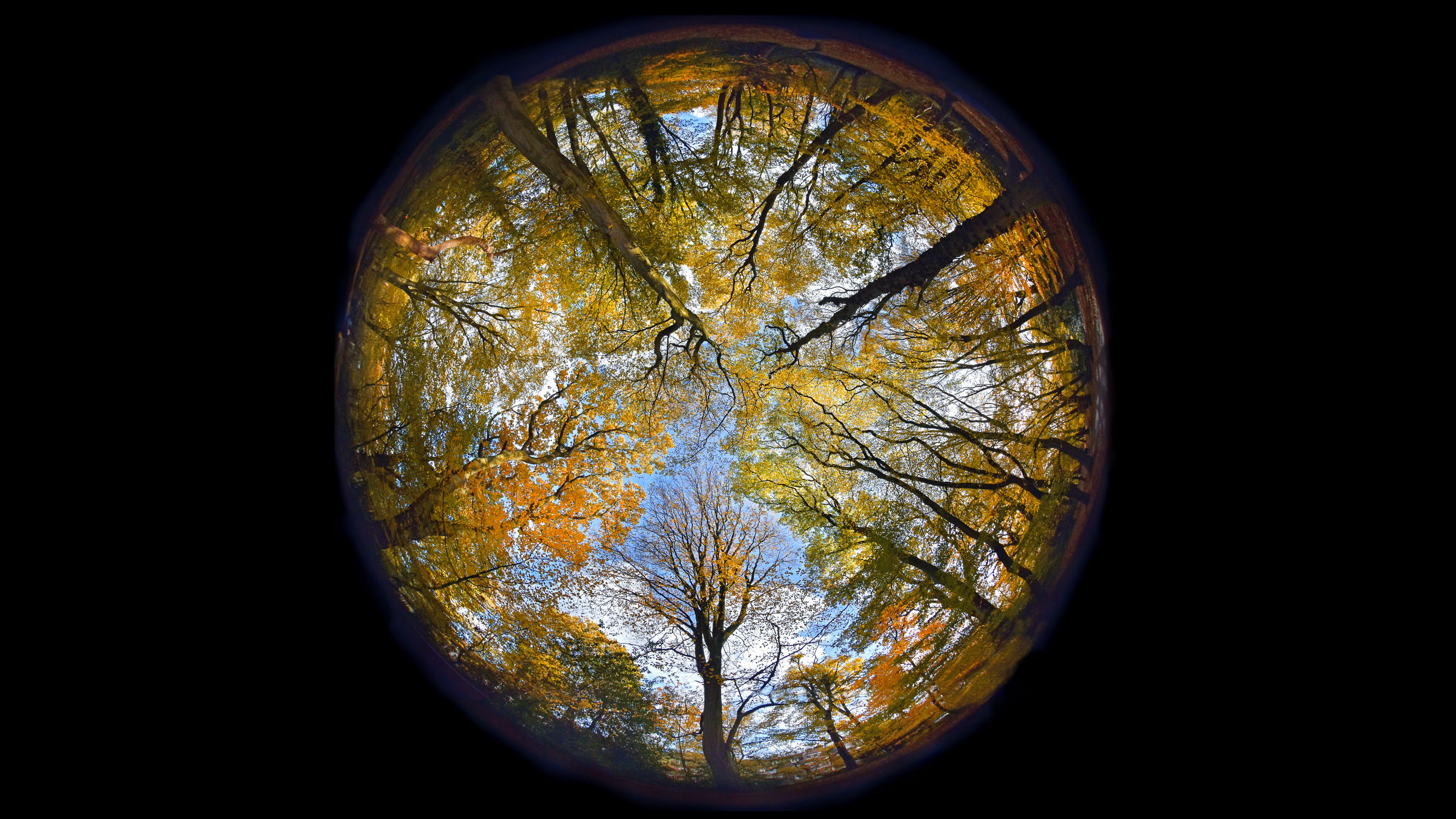

Keep an eye on where your legs and feet are positioned, or you might accidentally capture them in the shot. 180 degrees means the image will capture what is directly below the camera as well as what is in front of it. Since a fisheye lens can capture photos at 180 degrees, it can capture things a regular lens usually wouldn’t. If you photographed a building closeup from this angle using a fisheye lens, the building would reach out in the middle and close back up towards the top of the shot, creating another massively exaggerated view. Not only does this capture a whole new perspective, but it distorts your subject in a whole different way. The massive angle also means you can get low to the ground. Alternatively, to have more objects appear more normal but on a warped horizon, get your distance from your subjects instead. By getting up close to your target, the perspective of them will become increasingly distorted, exaggerating their appearance. The fisheye lens offers a huge field of view compared to other lenses. The resolution of the image tends to be the same as if you weren’t since the distorted effect of the lens usually means you’ll only be focusing on the middle of the scene anyway.

Where possible, try shooting at a 1:1 aspect ratio to minimise wasted space. You can achieve this effect by shooting at a focal length of 15mm on a full-frame camera, or a focal length of 10mm on an APS-C camera. Also known as the full-frame fisheye effect, this effect captures the whole shot still in the heavily distorted view of the fisheye lens. The other effect is called the diagonal fisheye effect. It’s important to know, however, that if you plan on shooting with an APS-C camera, you won’t be able to achieve this effect as your 35mm film equivalent focal length would be 13mm, even when shot at 8mm. You can achieve this effect at a focal length of 8mm with a full-frame camera. The circular fisheye effect creates a barrel-like distortion and vignetting occurs around the edges of the image which places the scene inside a black circle. There are two important lens effects to note when it comes to fisheye photography. With enough creativity, there’s plenty that the unique image created by the fisheye lens can do for your photography.īut where do you begin? Read on as we explore different ideas and tips for creative fisheye photography. You can also create the impression that you’re looking at someone through a peephole, or create a drunk effect on the image.

The distorted nature of the images created makes the lens great for extremely wide angle, such as catching a stadium or a crowd. The fisheye lens is useful for a number of photographic styles. With its round and convex design, the fisheye lens produces a distorted image, creating abstract photographs as if we were looking at something through the eye of a fish. Also known as a superwide or ultrawide lens, the fisheye lens is a camera component designed to shoot wide angles, usually up to 180 degrees.


 0 kommentar(er)
0 kommentar(er)
